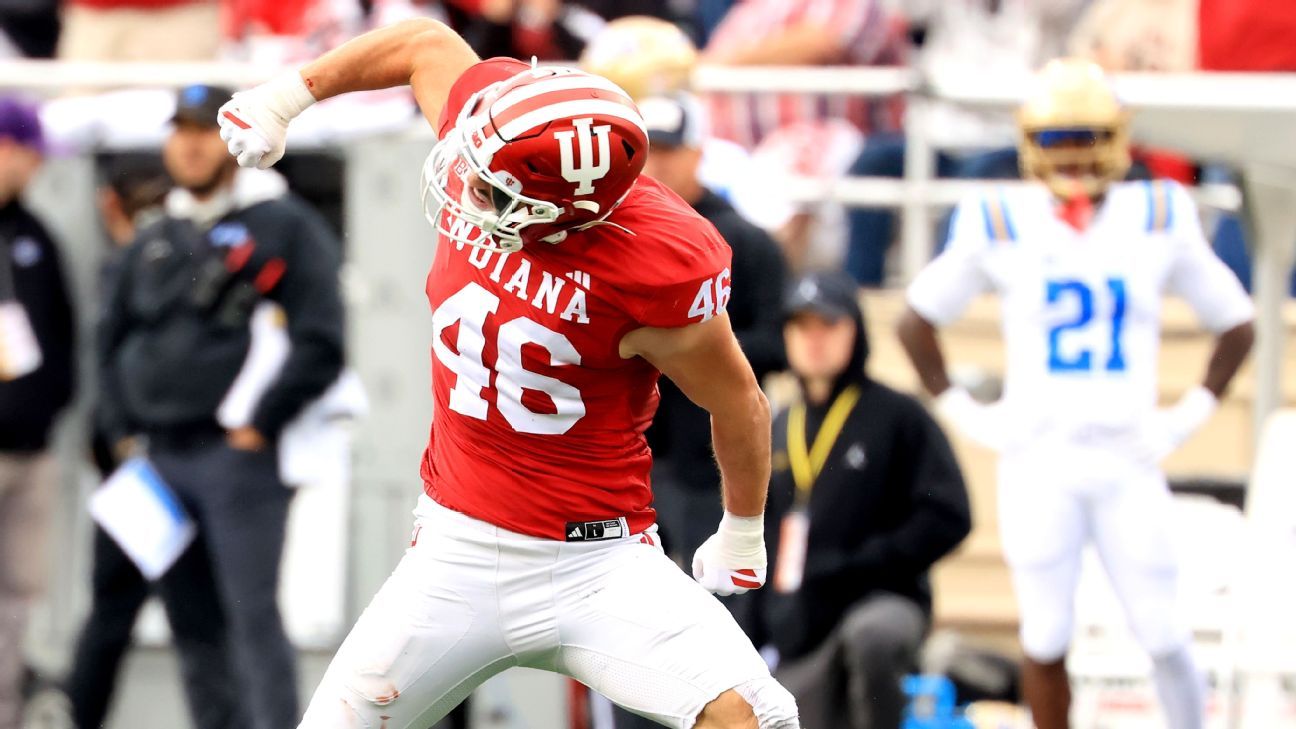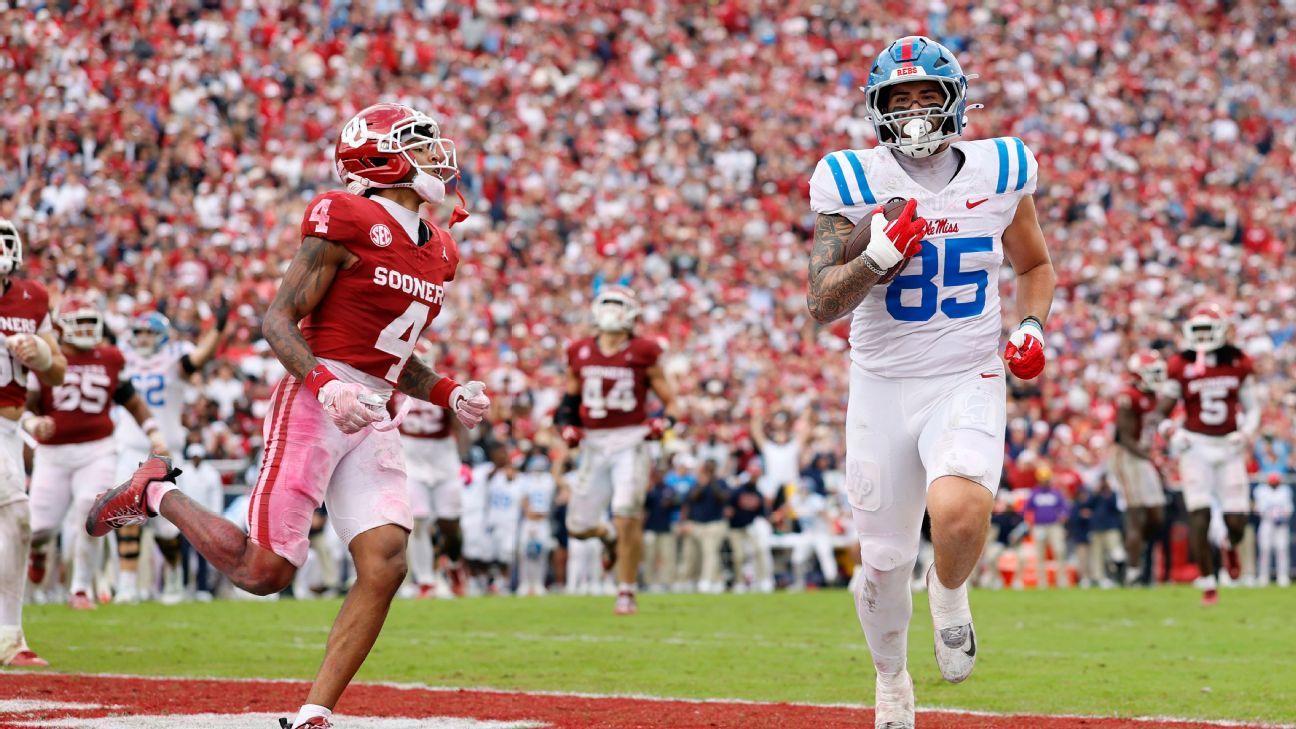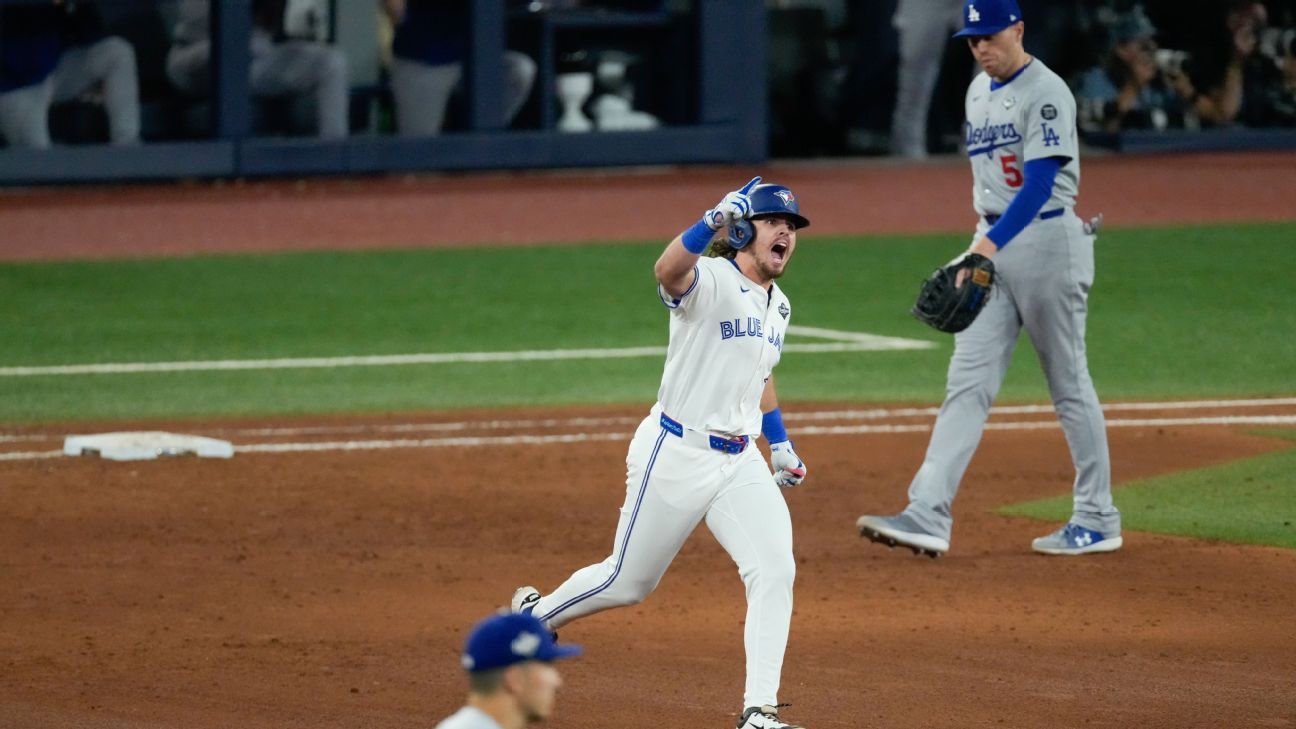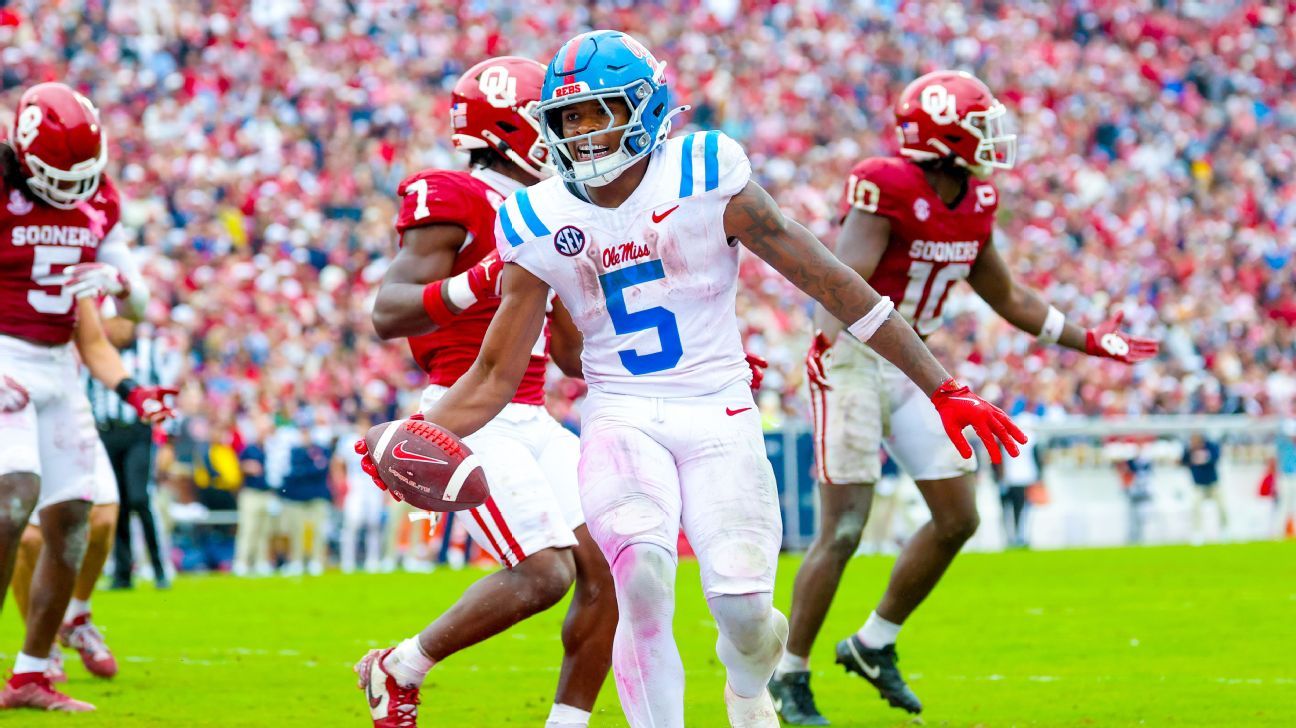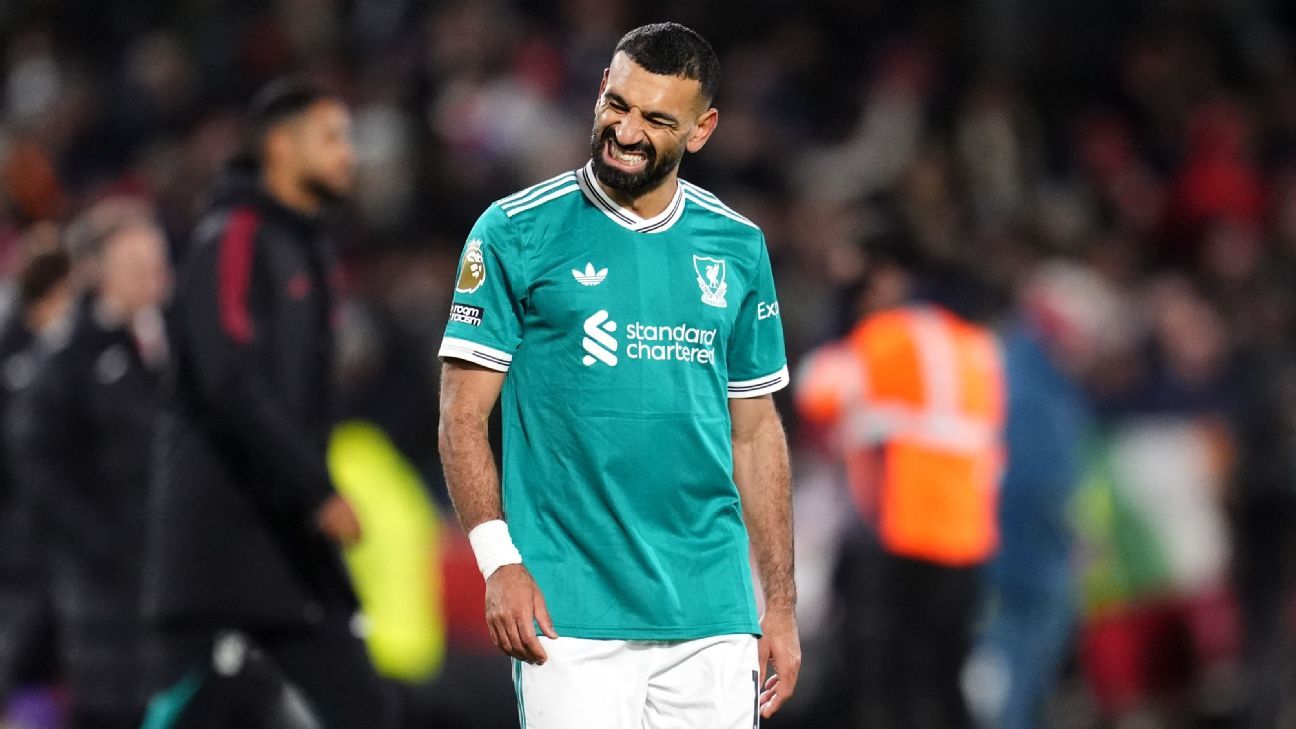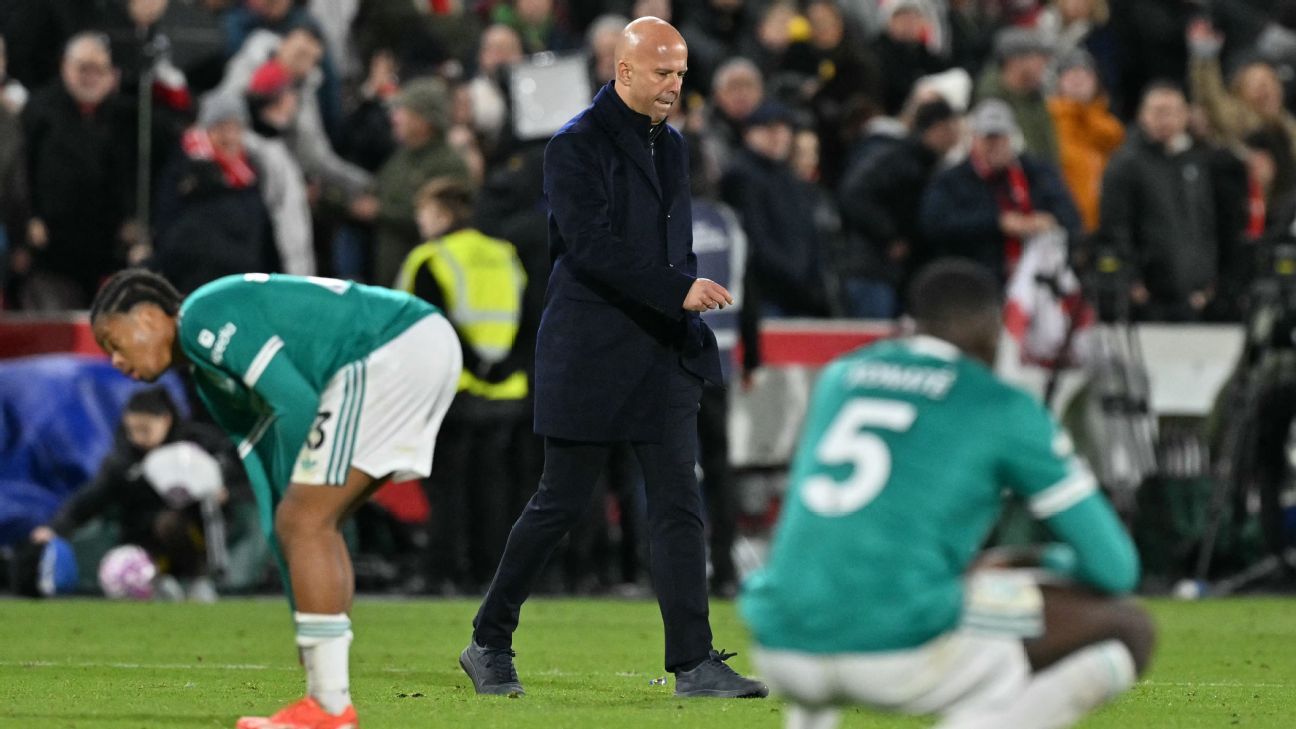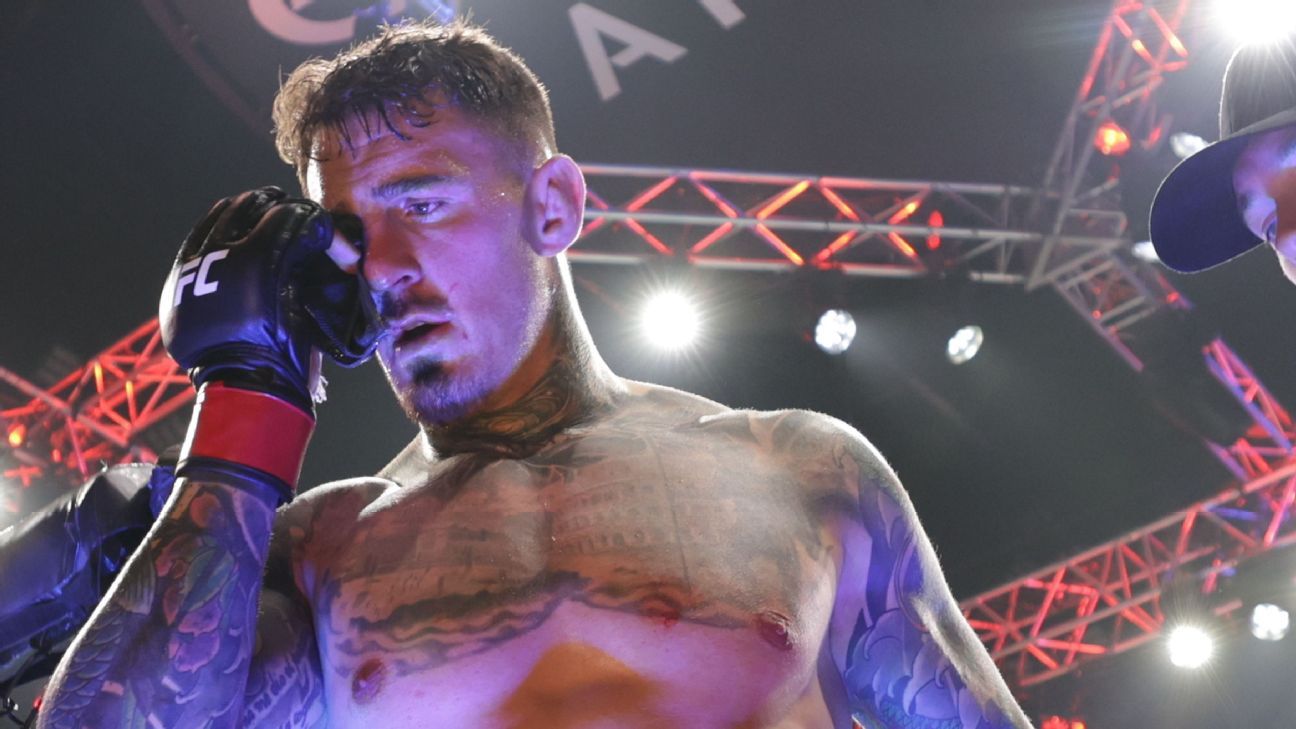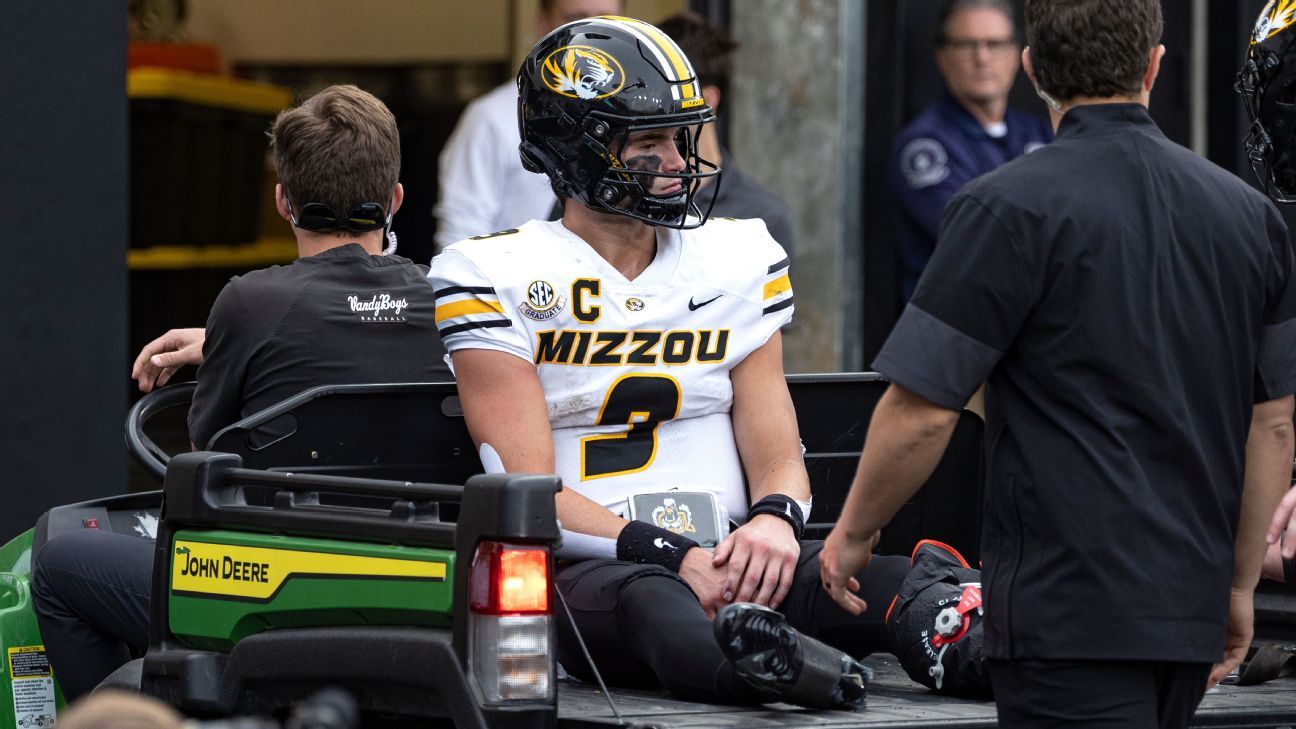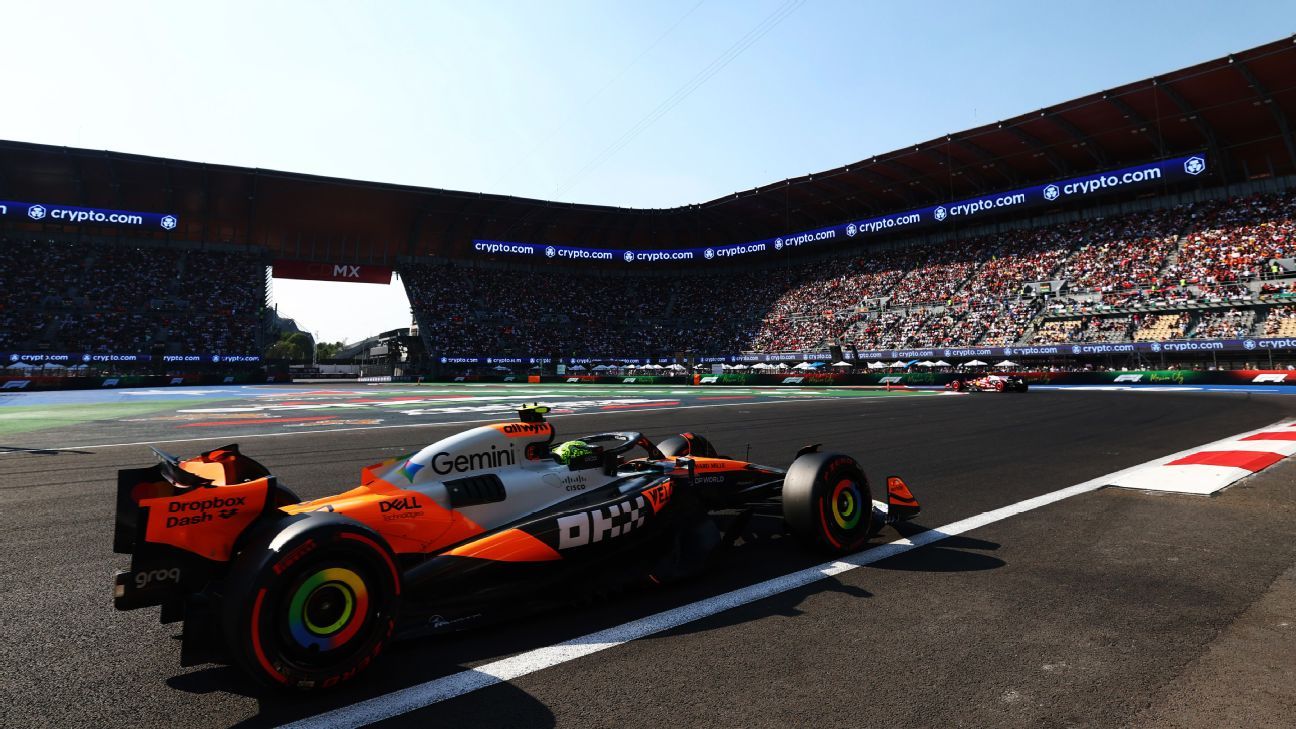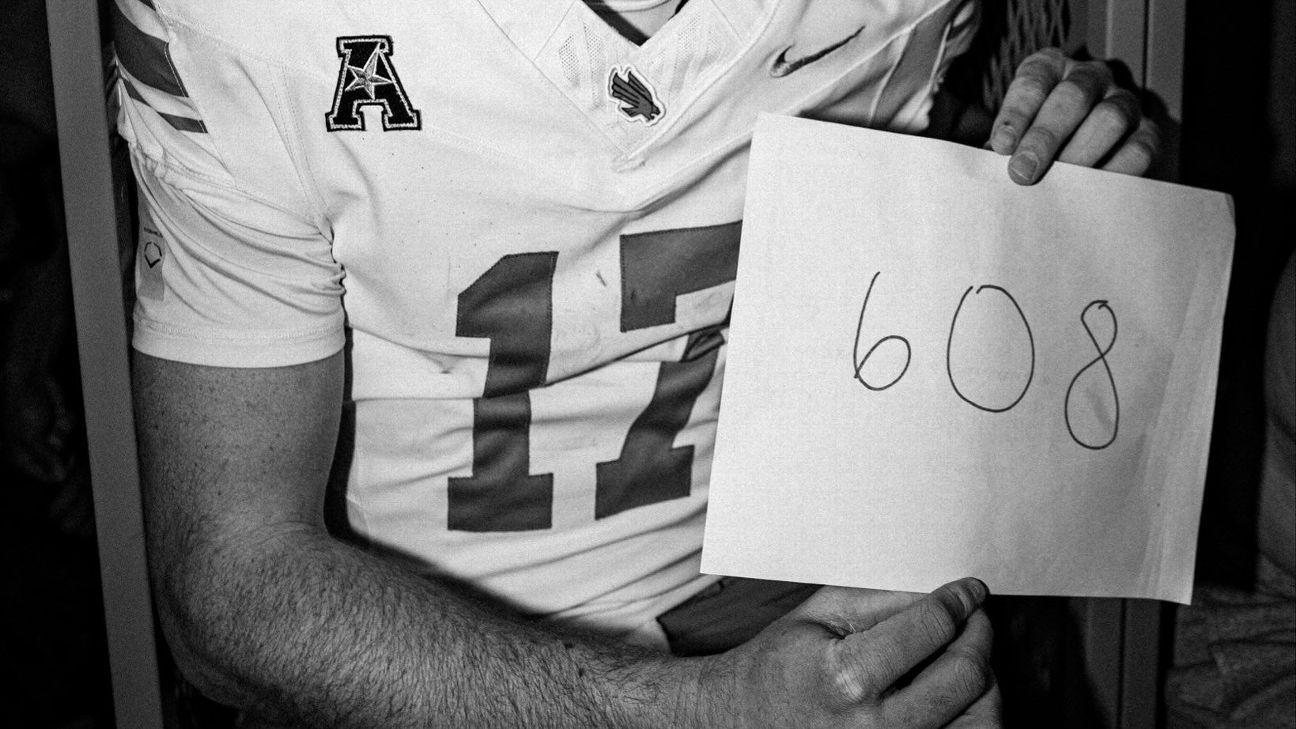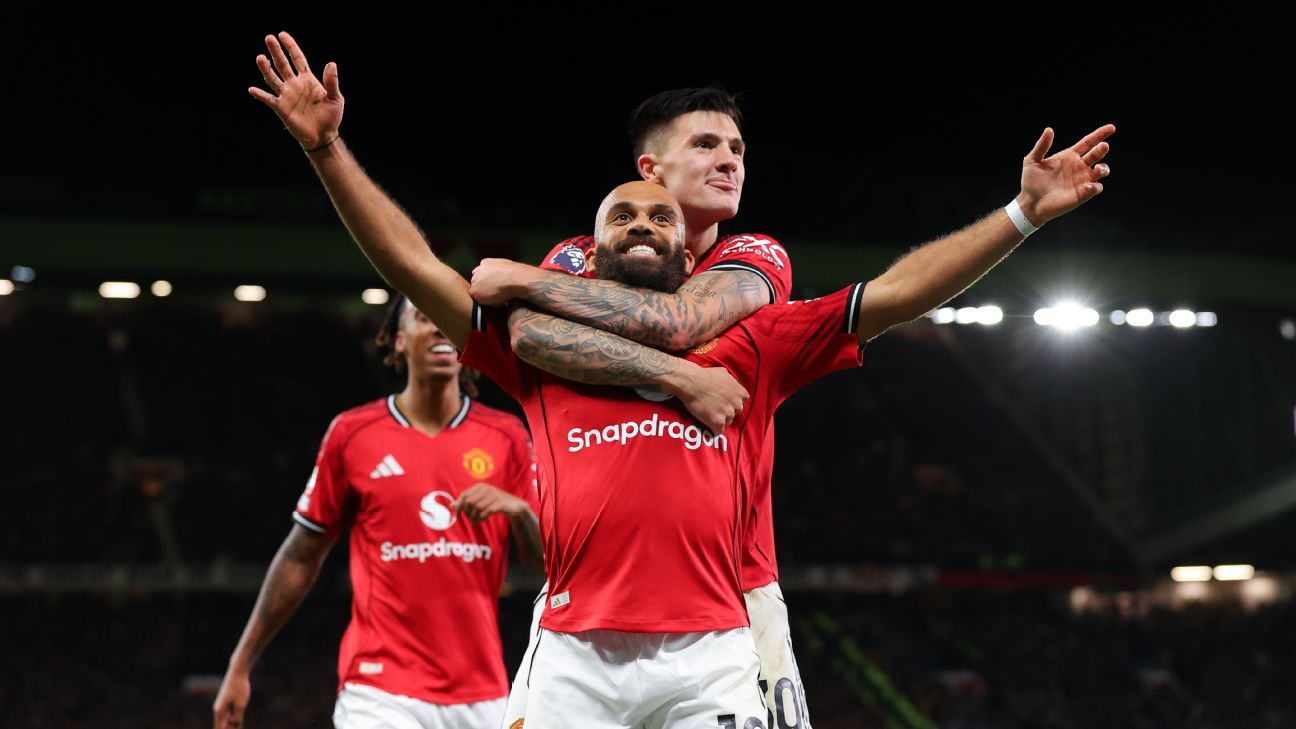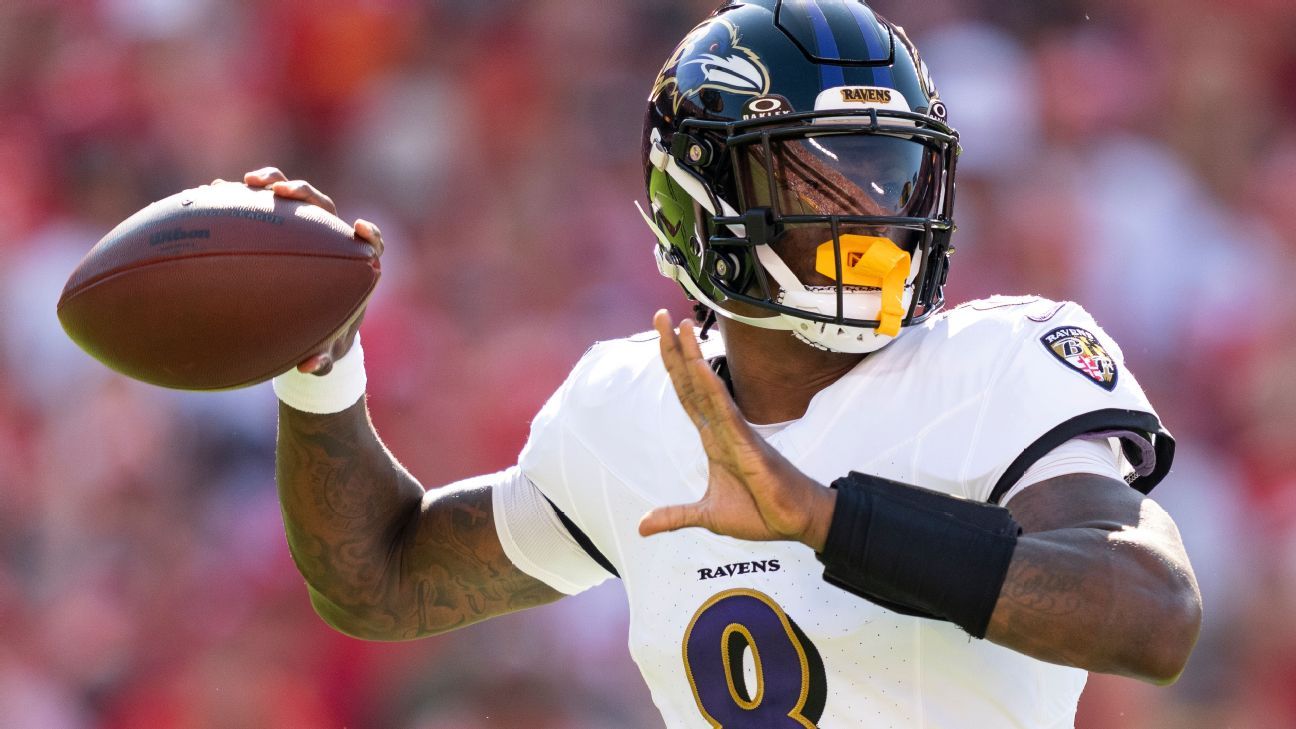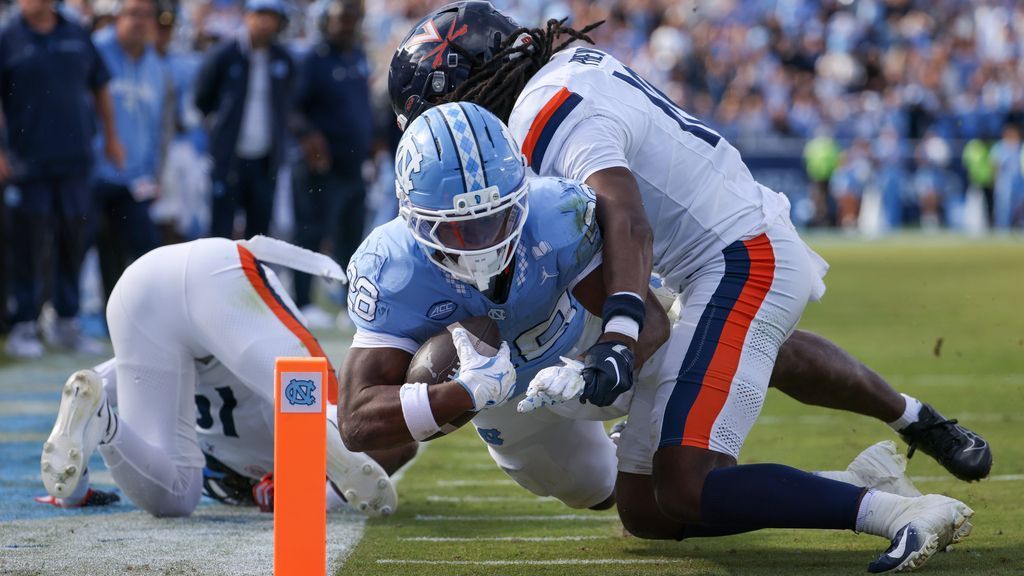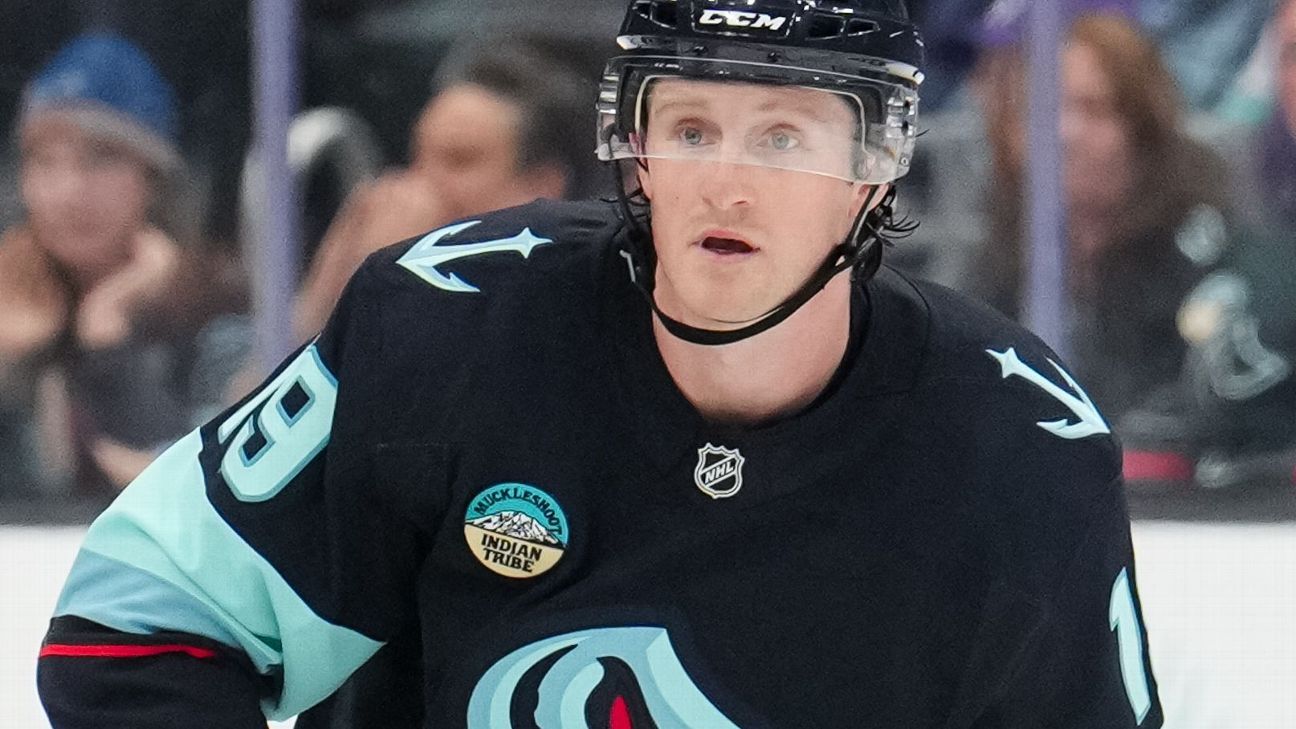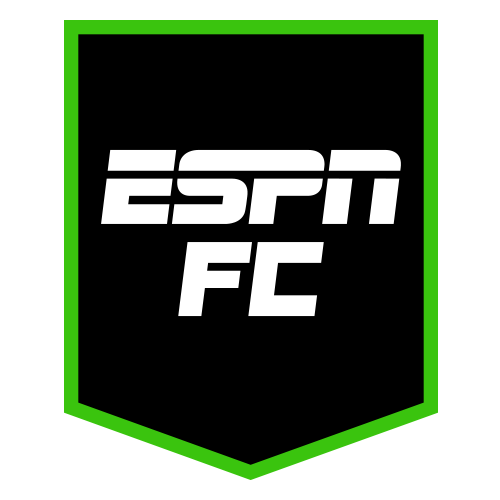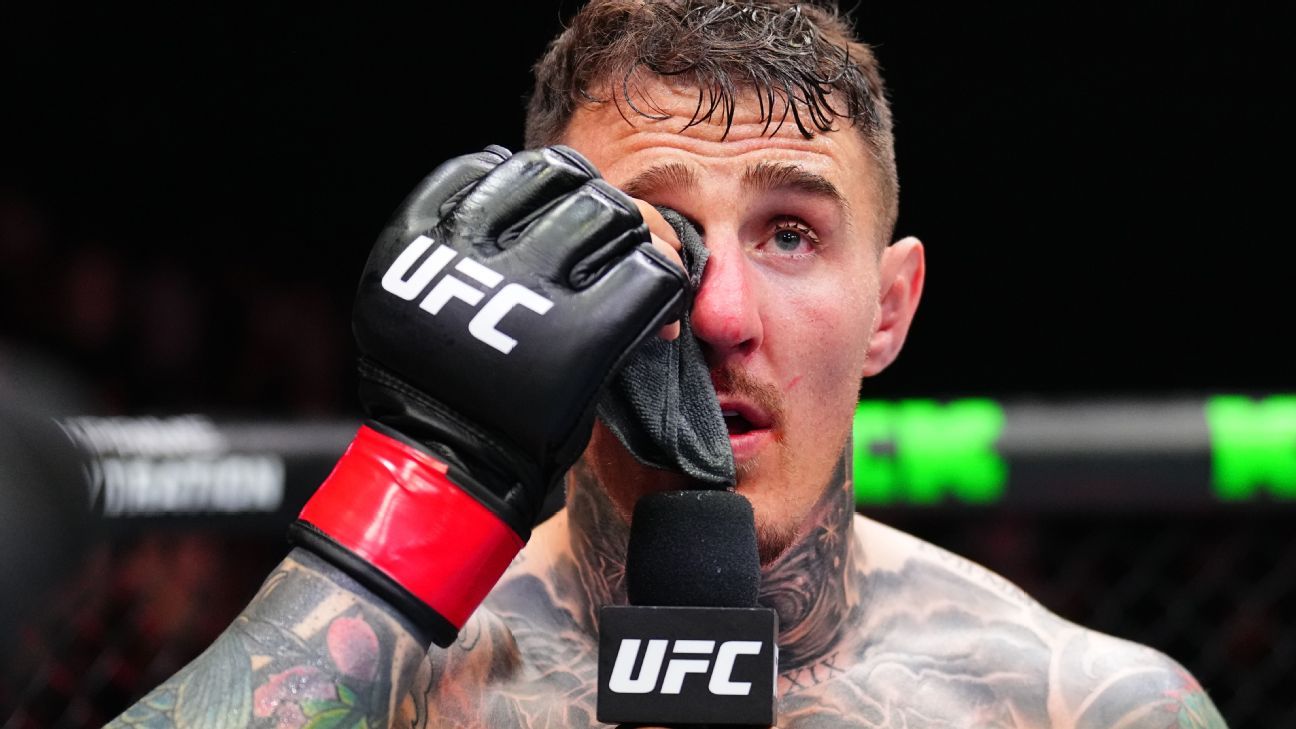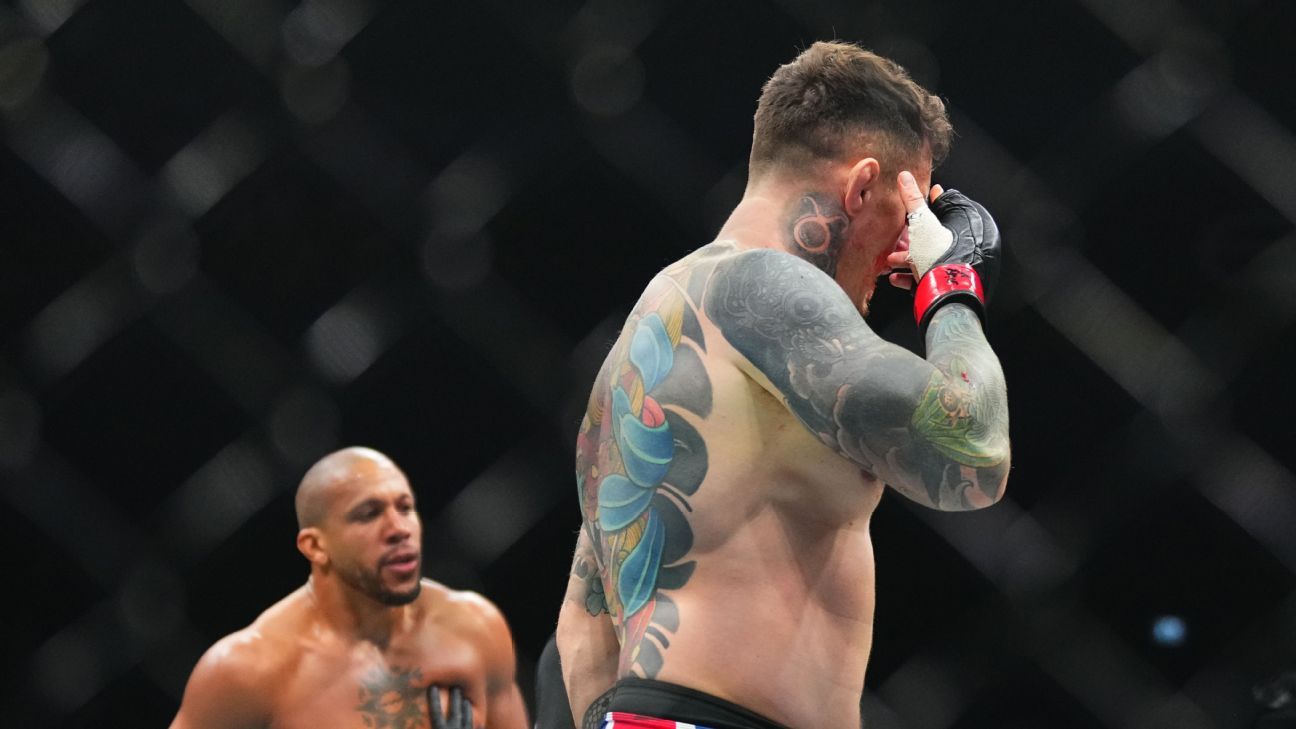
Kiley McDanielJul 16, 2025, 07:00 AM ET
- ESPN MLB Insider
- Kiley McDaniel covers MLB prospects, the MLB Draft and more, including trades and free agency.
- Has worked for three MLB teams. Co-author of Author of 'Future Value'
The 2025 MLB draft is now complete, so let's take a deeper look at how all 30 teams fared over all 20 rounds.
Starting with the Washington Nationals taking Oklahoma high school shortstop Eli Willits with the No. 1 pick, it was a draft filled with twists and turns. There were many intriguing selections that caught my eye, from Sunday's first round through the final rounds.
Here's my overview of every team's 2025 draft haul, identifying the best value pick, the player who could make it to the majors first and a sleeper to watch. I'll also give you my prevailing thought on every club's full class.
Jump to a team:
AL East: BAL | BOS | NYY | TB | TOR
AL Central: CHW | CLE | DET | KC | MIN
AL West: ATH | HOU | LAA | SEA | TEX
NL East: ATL | MIA | NYM | PHI | WSH
NL Central: CHC | CIN | MIL | PIT | STL
NL West: ARI | COL | LAD | SD | SF
![]()
Arizona Diamondbacks
Best value: Nathan Hall (fifth round). He had some buzz a round or two higher than he went due to his big tools: 65-grade speed, center-field fit at 6-foot-3, 200 pounds, plus raw power and solid-average contact rate in the SEC. He barely played at Clemson before transferring to South Carolina this season, so the track record is short and his swing may need some tweaks, but this is a premium ball of clay with real performance in the best conference.
Quickest to the big leagues: Brian Curley (No. 92 overall). He may be the first to make the majors in this entire draft class if he's pushed as a reliever, despite some success as a starter later in the season. His four-seamer and slider are both plus pitches while his attitude and amount of SportsCenter-level reaction on the mound were behind only Liam Doyle this season. The kid is just electric.
Sleeper to watch: There's a nice group in this class. Kayson Cunningham (No. 18 overall, connected here in almost every mock) and Patrick Forbes (No. 29 overall) don't qualify as sleepers and I think everyone who watched college baseball knows Curley.
Dean Livingston (fourth round) could throw 100 mph soon, but will need to see progress in his command and breaking ball. Sawyer Hawks (sixth round) has unique shapes that let his average stuff play up. Joe Ariola (seventh round) has a 65-grade heater and curveball along with the slider to bridge the gap, but his execution needs refining. Luke Doston (11th round) probably isn't a big league starter, but has unique shapes that I think can work in multiple innings of relief.
One big thought: I love the two gambles at the end of the draft: Jacob Parker (19th round; JoJo's brother) might play center field but has 25-homer upside regardless and Ethin Bingaman (20th round) is a real prospect as both a power-hitting right fielder and right-handed pitcher.
Otherwise, the Snakes targeted stuff/athleticism on the pitching side and contact rate on the position player side, which this braintrust has been doing effectively for years.
![]()
Athletics
1:05
The traits that helped make Jamie Arnold a member of the Athletics
Kiley McDaniel explains the traits that helped Jamie Arnold get drafted by the Athletics.
Best value: Jamie Arnold (No. 11 overall) was probably the best value of the first round as my No. 5 overall prospect after basically losing a number of coin flips at earlier picks. He was my top prospect entering the spring and underperformed a little because of his fastball locations, which seem fixable. He should be a No. 3 or No. 4 starter with some chance to break into the frontline tier.
Quickest to the big leagues: Zane Taylor (fifth round). He's 23 years old and was a premium senior sign who teams were jockeying to get inside of the top five rounds to set up overpays later. He has three average or better pitches and enough command to continue as a starter.
Sleeper to watch: I'll give you three guys I'm intrigued to see in pro ball: Devin Taylor (No. 48 overall), Gavin Turley (fourth round) and Grant Richardson (sixth round).
Taylor was a comp-round talent who shouldn't have made it to the 48th overall pick and may be an above-average hitter for average and power along with an above-average walk rate. Turley is also a left-field fit and has some swing-and-miss to his game, but has 25-homer upside and excellent feel to pull/lift, along the lines of Colby Thomas. Richardson missed the season with arm surgery, but is a 6-foot-3 lefty with a solid fastball and a killer slider. He could move quickly in shorter stints.
One big thought: The A's did a solid job by stocking up on college performers to deepen the system and selected ones I liked in the first 11 rounds. Arnold and Taylor could be standouts while the others are more role-player types. They added prep lefty Alex Barr (12th round), who is 6-foot-2 and was into the mid-90s at his best, as a potential high-six-figure prep signee if there are savings on the early picks.
![]()
Atlanta Braves
Best value: Briggs McKenzie (fourth round). He's certainly going to sign for well over slot, with rumors he was looking for $3 million before the draft. He's a solid athlete with a standout, sweeping breaking ball and starter traits.
Quickest to the big leagues: There isn't an obvious answer, but it'll probably be whichever of Alex Lodise (No. 60 overall), Dixon Williams (fourth round) and Landon Beidelschies (sixth round) takes one step forward developmentally. If Beidelschies is a relief-only development project, then he's a clear answer.
Sleeper to watch: Conor Essenburg (fifth round). He was seen more as a left-handed starter who was likely going to college entering the spring, then hit really well this spring (including a home run off of a Jack Bauer fastball) and got into the third-to-fifth-round area as a hit-over-power corner outfielder who may be just scratching the surface.
One big thought: Cody Miller (No. 96 overall) looks like the major piece of savings to set up the pool to pay for McKenzie. Tate Southisene (No. 22 overall) has the tools to be an above-average every-day player if an adjustment to the setup and load of his swing can work, which is doable. He was a favorite of a number of teams that like to stockpile athletic-testing standouts.
![]()
Baltimore Orioles
Best value: Wehiwa Aloy (No. 31 overall) was 15th on my final board, and I know he slipped below that because he both chased and missed in zone at a worse-than-average rate -- but he has also been productive at the plate, has plus power and strong ball flight, and will stick at shortstop after playing in the SEC. Getting either the in-zone miss or the chase up to average would be enough to make him an every-day player, and with the potential to be an All-Star.
On the broadcast, I pointed out that the Orioles did something like this with Jordan Westburg, also an SEC infielder with big tools but limited polish at the plate, at almost the exact same pick.
Quickest to the big leagues: There are a few strong candidates here. Ike Irish (No. 19 overall) and Caden Bodine (No. 30 overall) are both polished hitters while Joseph Dzierwa (No. 58 overall) may have the best command in the draft. You can toss out Irish if Baltimore is set on making him a full-time catcher because that will slow down his promotion schedule.
Sleeper to watch: JT Quinn (No. 69 overall) was one of my favorite college-reliever-to-pro-starter projects this spring and I thought I may be on an island, but he demonstrated why in the Cape Cod League after the season: 3 starts, 14 IP, 13 baserunners, 25 strikeouts. His power sinker/slider/curveball combo are all above average and his delivery/athleticism suggests the strikes could be good enough, even at his 6-foot-6 height.
Cole Johnson (18th round) is an advanced hitter with average other tools in a corner-outfield fit. Hunter Allen (seventh round) is a 6-foot-4, 245-pound righty with three solid shapes and a mid-90s heater that mean he could last for multiple innings despite coming from D2 Ashland.
One big thought: The O's used their draft-best bonus pool to mostly add depth to the system from the college ranks, with two contact-oriented, smaller high school position players in Slater de Brun (No. 37 overall) and Jaiden Lo Re (fifth round). As usual, pitchers were not the priority, but I like the upside gamble on Quinn and certainty of Dzierwa, with Caden Hunter (sixth round) having a chance to join them if he adds a tick more stuff.
![]()
Boston Red Sox
Best value: Kyson Witherspoon (No. 15 overall). He seemed ticketed for somewhere between picks Nos. 8 through 12 for half the spring, then seemed to be slipping late in the process as teams prioritized position players and Tyler Bremner and Gage Wood emerged as other collegiate righties.
Witherspoon's short arm circle is unusual but not as unique as it was a decade ago. On the right day, he'll show a plus four-seam fastball and cutter while keeping hitters off balance with a solid-average curveball and good-enough command. Any progress with his other pitches or command and he'll be a midrotation starter.
Quickest to the big leagues: Witherspoon or Anthony Eyanson (No. 87 overall) could move quickly but Marcus Phillips (No. 33 overall, nailed in the mock) has a better chance to be left in shorter stints and get to the big leagues first.
His arm action is a red flag for some teams, but he otherwise has the traits to start, with frontline potential. Does Boston try the risky move of messing with an arm action or let Phillips use his four plus pitches in shorter stints?
Sleeper to watch: I'll give you a sampler platter of interesting picks down the board. Christian Foutch (fifth round) has plus-plus velocity that plays down some because of its shape and uses his cutter more than his splitter, but I think the splitter is better. Dylan Brown (eighth round) is a lefty with a 40- or 45-grade heater but average slider and plus changeup; if you can tease out some velo he may be a back-end starter.
Jacob Mayers (ninth round) was kind of a mess at LSU this year, but racks up strikeouts and has been into the triple digits. Maximus Martin (10th round) has plus raw power and good pull/lift rates along with a solid glove, but he has real contact issues. Patrick Galle (17th round) sits 95-97 and hits 99 mph, adding an above-average cutter and slider, but he threw just 11 innings in two seasons at Ole Miss.
One big thought: The Red Sox added a number of interesting pitchers and I'd expect them to see some immediate arrow-up seasons next year like they did with Brandon Clarke and Payton Tolle this year. Henry Godbout (No. 75 overall, medium tools with good skills) and Mason White (fourth round, big lefty power and infield fit, contact questions) were the two position players with low-end every-day potential. The development-focused Red Sox org seems to zero in on traits to be optimized rather than looking to high schoolers for upside as they did not take a prep player until the 19th round.
![]()
Chicago Cubs
Best value: Josiah Hartshorn (sixth round, mocked to the Cubs on Friday). He was getting second-round reviews as a long-time standout hitter in the class with a good approach. He is limited to a corner but grew into easy plus raw power this spring.
Quickest to the big leagues: Kade Snell (fifth round) or Nate Williams (13th round). Snell will be 23 in a few weeks and Williams turns 24 in September. They'll be pushed, but they both performed well in the SEC so they shouldn't last long in A-ball -- particularly Williams since he pitched only in relief and has an above-average four-seam/curveball combo.
Sleeper to watch: Kaleb Wing (fourth round). He was a favorite of a number of analytical teams that are good at pitching development, with the Cubs also in that group. He's a standout athlete with a clean delivery and three pitches with above-average potential, though is only 6-foot-2.
Colton Book (ninth round) is an lefty with very light velocity but enormous extension (something the Cubs seem to be targeting) and 6-foot-8 lefty Pierce Coppola (seventh round) has had some trouble staying healthy (under 50 innings in four seasons at Florida) but always strikes out a ton of batters, even more than his raw stuff suggests.
One big thought: Ethan Conrad (No. 17 overall) and Kane Kepley (No. 56 overall) give this class two likely big leaguers with everyday potential and I'll guess Dominick Reid (No. 90 overall; solid-average stuff with strong results) and Snell created some savings to land Wing and Hartshorn.
I like the combination of getting to the performers and seniors early to get the best of that group to create savings and to actually land top-three-rounds high school players with the savings, not just taking what's left over. There appears to be a real strategy here and one that worked, landing players I think will outperform their draft position -- something that can't be said about that many teams.
![]()
Chicago White Sox
Best value: Gabe Davis (fifth round). He was tracking like a late first- or second-round pick entering the spring as a relief-to-starter conversion in his draft year. That didn't happen as he had trouble throwing strikes, connected to his 6-foot-9 frame. He has five average to slightly above pitches and some feel but might fit best in a multi-inning relief role.
Quickest to the big leagues: Colby Shelton (sixth round). He turns 23 years old in December so he should be pushed aggressively, but he has also been productive offensively and defensively in the SEC for three seasons, hitting 52 homers in 170 games as a lefty-hitting shortstop.
Sleeper to watch: Jaden Fauske (No. 44 overall). He had one of the better summers at the plate on the showcase circuit, has caught some in the past and was turning in above-average run times this spring, a few grades better than last summer. He didn't face much competition in the Illinois prep ranks but has a chance to be a quick-moving, polished high school bat with a shot for plus on-base and plus power output.
One big thought: Billy Carlson (No. 10 overall), Fauske, and Kyle Lodise (No. 76 overall) are a nice group of position players who were good values at each pick. Landon Hodge (fourth round) is a lottery ticket and Anthony DePino (seventh round) has some of the better tools among college senior signees. I like drafts that have a position-player lean and seek some risk, but also add some likely big leaguers, which is what the White Sox did here.
![]()
Cincinnati Reds
Best value: Justin Henschel (seventh round) piqued my curiosity early in the spring before needing elbow surgery after three outings. He flashed three above-average pitches and starter command for the first time but didn't show enough bulk; he could be one of the steals of the draft.
Quickest to the big leagues: Mason Morris (No. 83 overall). He has a 60- or 65-grade cutter and slurve along with an above-average fastball but might not have good enough command to turn over a lineup, so he could be pushed as a middle-to-late relief type.
Sleeper to watch: Aaron Watson (No. 51 overall) or Eli Pitts (fifth round). Watson might be the best bet in the prep pitcher class (other than Seth Hernandez) to be a real big league starter, giving off some John Lackey vibes. Pitts is a plus-plus runner with good contact skills who just needs to add more power.
One big thought: Third- or fourth-round talents SS Ethan Moore (18th round) and RHP Myles Upchurch (19th round) could be solid additions if they can be signed. The Reds got a nice mix of prep upside at their first two picks and with Pitts later before moving into the college ranks.
If Steele Hall (No. 9 overall, connected in many of the mocks) turns into a cross between Jett Williams and Trea Turner -- like I think he can -- or even something in that ballpark, this will be a successful class.
![]()
Cleveland Guardians
Best value: Jace LaViolette (No. 27 overall). The Guardians tend to gravitate to hit-over-power types in domestic and international amateur markets but leaned hard into big power with Laviolette and Nolan Schubart (No. 101 overall).
Laviolette entered the year as the odds-on favorite to go No. 1 then had a very uneven spring headlined by a .258 average and 25% strikeout rate. I think his best comp is Cody Bellinger while others go with Joey Gallo, but he's too talented to last as long as he did. Dean Curley (No. 64 overall) and Luke Hill (fourth round, called in the Friday mock) are more Cleveland's usual type.
Quickest to the big leagues: Ryan Prager (ninth round) or Riley Nelson (fifth round). Prager opted to return to Texas A&M after going in the third round last year as a second-round talent. His stuff and performance both backed up this year, so he's not a slam dunk big leaguer, but he's a lefty with feel and unique angles who could easily be a back-of-the-staff arm.
Nelson is yet another advanced hitting first baseman along the lines of C.J. Kayfus or Cooper Ingle, both excelling in the Guardians system.
Sleeper to watch: Aaron Walton (No. 66 overall) and Wil Hynes (No. 70 overall) both went a bit higher than I expected, and Nelson Keljo (sixth round) went a bit later than I expected.
Walton has a power/speed combo with enough contact skills and he might stick in center field at 6-foot-3, 220 pounds. Hynes is a lanky 6-2 prep righty who is polished but might not have a plus pitch. Keljo is a 6-4 lefty with solid-average stuff that was OK as a starter but might fit better in shorter stints.
One big thought: There are some intriguing gambles after the 10th round in Vaughn Neckar (20th round, prep righty with a good breaker), Evan Chrest (15th round, sinker/slider righty currently rehabbing elbow surgery), Aaron Savary (13th round, standout size and shapes with below-average velocity), and Ryan DeSanto (12th round, crafty 6-4 lefty who also needs more velo). The last three specifically fit types the Guardians have worked well with in the past.
If the Laviolette/Walton/Schubart college power bats work out, this will be a good class and also address a big league need.
![]()
Colorado Rockies
1:10
The traits that helped make Ethan Holliday a member of the Rockies
Kiley McDaniel explains the traits that helped make Ethan Holliday the fourth overall pick by the Rockies.
Best value: Max Belyeu (No. 74 overall). I thought Belyeu would go in the 35-55 range because he looked like a late first-rounder early in the season, then was hurt or playing through an injury the rest of the season. His metrics were just OK this year, but I don't think they reflect who he will be next season and in the future; there's a real shot he's a strong everyday right fielder.
Quickest to the big leagues: Antoine Jean (seventh round). He might be the first player to make the big leagues from this class because he's probably a long-term reliever, he's left-handed and he performed well this year. Oh, and he'll be 24 in a few weeks.
Sleeper to watch: Ethan Hedges (No. 77 overall). He's a later-blooming athlete who is a real prospect as a reliever but will be developed strictly as a third baseman. He has average-or-so tools but a strong glove and plus arm at third base. Riley Kelly (fourth round) has a curveball that's routinely over 3,000 rpm and continues to make steady progress.
One big thought: Landing their guy, Ethan Holliday at the No. 4 pick will define this draft, for better or worse. I like the additions of J.B. Middleton (No. 45 overall) and Belyeu after that before getting into the lottery tickets and role players, with Jean as a likely big leaguer to return value while they wait on the rest of the group to develop.
![]()
Detroit Tigers
Best value: River Hamilton (11th round) and Ethan Rogers (18th round). I'll presume Hamilton has a deal done, as most 11th-rounders do, and Rogers might be less likely to sign. Hamilton had third-to-fourth round interest as an athletic righty with above-average stuff, and Rogers' interest was even a touch higher, as a lefty into the mid-90s with an average-to-above four-pitch mix.
Quickest to the big leagues: Caleb Leys (fourth round). I mentioned Detroit's interest in Rogers and Leys in the Friday mock. He could be a quick-mover if he's developed in relief because of his mid-90s heater and being a 22-year-old senior.
Sleeper to watch: Malachi Witherspoon (No. 62 overall). Kyson's twin brother had buzz as high as the late 20s and seemed likely to go inside of No. 50, so landing him at No. 62 is a nice value. He isn't that different from Kyson, though just a tick behind in a couple of respects.
One big thought: Doubling down on prep hitters who are missing the prime summer showcase events on their résumé is intriguing with Jordan Yost (No. 24 overall) and Michael Oliveto (No. 34 overall) as their top two picks, but also seems like a strategy in light of their interest in Coy James (bad 2024 summer numbers, better 2023 summer performance) whom the Nats drafted.
Scouting director Mark Conner was the director in San Diego in 2021 when they hit it big with Jackson Merrill with a similar lack of high-level summer at-bats, so maybe Detroit has uncovered a way to find value in the most competitive part of the draft?
![]()
Houston Astros
Best value: Jase Mitchell (seventh round). I connected him to the Astros in my second-to-last mock as they were one of a handful of teams most on Mitchell as his profile rose this spring, with the seventh round being a great value. He's a 6-foot-3, lefty-hitting catcher with a nice mix of hit, power and defense who was tracking as if he might get seven figures.
Quickest to the big leagues: Nick Potter (fifth round). He threw 29⅔ innings, all in relief, with 17 walks, but with a touch more control the traits are here to be a middle reliever, with a plus fastball and 55-grade slider.
Sleeper to watch: Ethan Frey (No. 95 overall) and Nick Monistere (fourth round). Frey had a quiet college career at LSU then caught fire in the second half, becoming arguably the best hitter for the national champs. He was a designated hitter but has played some outfield and catcher in the past, and his easy plus raw power is real.
Monistere was a stats find, quietly the third-best prospect for Southern Miss (behind J.B. Middleton and Jake Cook) with 20-25 homer upside as a second baseman. Joey McLaughlin got some late top-five-rounds buzz for his raw tools as a prep outfielder in Oklahoma.
One big thought: The Astros were missing their second-round pick and were picking later in the round throughout, so expectations were a bit lower for their haul.
Xavier Neyens (No. 21 overall) is a big variance prospect who could be a top-100 prospect in less than a year or run big strikeout rates and be a slower burn. Following that with college performers such as Frey and Monistere was smart, then Mitchell's upside gives some hope of a second prep success story.
![]()
Kansas City Royals
Best value: Josh Hammond (No. 28 overall). Hammond (ranked 17th in my top 250) was the third-ranked of my pound-the-table guys behind Eli Willits and Gavin Fien but is the only one not drafted roughly where I had him.
He gives some Austin Riley and some Josh Donaldson vibes; I think he's a .250 hitter who could hit 25-30 homers a year while playing an above-average third base, and is up to 97 mph on the mound.
Quickest to the big leagues: Aiden Jimenez (fifth round). He ate innings out of the Arkansas bullpen with solid but not overwhelming stuff. He's going to move quickly as a performer with enough raw stuff to get to the big leagues. There's some intriguing pure reliever picks down the board with a shot as well, such as Shane Van Dam (ninth round), Hunter Alberini (11th round) and Matthew Hoskins (12th round).
Sleeper to watch: Michael Lombardi (No. 61 overall) was a sleeper I kept in my back pocket as the center fielder/closer for Tulane. He gave me some Brody Hopkins vibes because of his two-way college fit and standout traits on the mound that could take off with better development. He made starts down the stretch and got second-round buzz, which is where he ended up going. Lombardi has a mid-90s heater with good shape, an above-average curveball, solid changeup, and could be a starter if he can develop a slider to bridge the fastball/curveball movement gap.
One big thought: Sean Gamble and Hammond both have clear everyday upside, Lombardi and Justin Lamkin have clear starter potential, and Cameron Millar has impactful stuff that could fit in a couple of roles.
This draft relies on a couple of those players hitting their upside (I've been heavy on Hammond and Lombardi all spring, a little more mixed but not negative on the other three) because the rest of the draft is likely to have a couple of big league role players, likely righty relievers but maybe some position players as well.
![]()
Los Angeles Angels
Best value: CJ Gray (fifth round). Gray popped onto the scene last summer with a dazzling performance, but scouts tempered their enthusiasm when he had trouble throwing strikes all spring. He finished the season better and showed well at the draft combine, giving teams a glimpse of what his plus athleticism could mean in terms of improvement in the next few years.
He's a loose 6-foot-2 with a heater into the high-90s, a lower release height and an above-average slider with the makings of a changeup. If he can just keep throwing it over the plate, he has a big league future.
Quickest to the big leagues: Chase Shores (No. 47 overall, connected in my mock 3.0) or Nate Snead (No. 105 overall). If both are left in relief like in college, then Shores will win and could be in the big leagues before the 2026 draft. If Shores is stretched out, Snead has the traits to, with some adjustments, move quickly as well.
Sleeper to watch: Jake Munroe (fourth round) or Luke Lacourse (sixth round). Munroe graded out well defensively at third base and has the polish (pitch selection, ball flight) on top of fringe-to-average tools to be a big leaguer along the lines of Jared Triolo, which is a nice find in the fourth round. Lacourse has the highest breaking ball spin rate in the draft, but was underwhelming with fastball velocity this spring in the low-90s. He could break out with more progress on that front.
One big thought: They opted for savings at the No. 2 pick with Tyler Bremner instead of Ethan Holliday or Kade Anderson. Those savings mostly went to prep pitching, with Johnny Slawinski in the third, Gray in the fifth, Lacourse in the sixth and Xavier Mitchell in the 13th all seeming to be overslot -- or at a seven-figure slot in Slawinski's case. It's a bulk strategy contingent on pitching development and I like the confidence to do something different in that spot. Because it's such a high-leverage, public decision, it just needs to work.
![]()
Los Angeles Dodgers
Best value: Aidan West (fourth round). He has some late second-round buzz and I assumed he'd go by the third, but L.A. got him in the fourth. West is a pure lefty hitter with a shot to stick at short along with solid feel to pull/lift the ball. Mason Ligenza -- taken in the sixth round (connected in mock 3.0) -- is another likely overslot prep position player, but I'm more convinced that West will hit.
Quickest to the big leagues: Zach Root (No. 40 overall). He performed in the SEC and has four distinct pitches that are all above average. Root doesn't look like a lot of current big leaguers physically or in his delivery, but lefties come in lots of different packages and I think Root creates deception with his delivery.
Sleeper to watch: The list is long here. Cam Leiter (No. 65 overall) fits the Dodgers' power arm approach but hasn't thrown many strikes and is coming off of elbow surgery. Landyn Vidourek (No. 104 overall) has huge raw power and showed out in athletic testing at the combine, so the pieces are in place to be a breakout type. Davion Hickson (fifth round) has some starter vibes now, so he's a nice gamble in the fifth. Mason Estrada (seventh round) is probably a reliever, but he was studying to be an engineer at MIT and was up to 97 mph, mixing in a plus breaker, though with a loud delivery and issues with strikes. Jack O'Connor (eighth round) and Logan Lunceford (12th round) could work well in shorter outings.
One big thought: Charles Davalan (No. 41 overall) might be the best pure hitter in the draft while also having outstanding bat speed -- and might also be a center fielder. He's just 5-foot-9 and didn't play much center in college, so that's why he made it to pick No. 41. I was expecting high-upside, high school fireworks at picks 40 and 41, but the Dodgers saved that for later. Sam Horn (17th round) is a fascinating signability gamble who may need $1 million to sign. He has an above-average sinker/slider combo but limited miles due to elbow surgery and playing QB at Missouri.
![]()
Miami Marlins
Best value: There wasn't a big gap between talent and pick for any one player in particular, but Cam Cannarella (No. 43 overall) entered the year as a potential top-five pick and battled through a shoulder injury to have an uneven year. If he can get back to his freshman year performance, he'll be a steal.
Quickest to the big leagues: Joey Volini (sixth round). He'll be 23 in December so he'll likely be promoted aggressively to get him playing with his peers, but he's also a polished performer who had a velo spike this season and may have one more tick
Sleeper to watch: You could choose almost any of their picks from Rounds 3-10. Max Williams (No. 78 overall) needs a swing rework/adjustment but has everyday tools. Drew Faurot (fourth round) is a switch hitter with plus power who's a decent defensive second baseman. Chris Arroyo (fifth round) was seen more as a pitcher in high school and has progressed a lot the past two years as a hitter. Emilio Barreras (eighth round) is limited physically, but has some of the best bat-to-ball in the draft. Jake McCutcheon (10th round) has plus raw power from the left side and fits at second base/left field.
One big thought: The Marlins loaded up on college players, in part because these were all solid values at the picks -- but also likely with the thought that the farm system is well stocked in the low minors and the big league team is showing signs of coming together. All of the picks in the top 10 rounds were from bigger schools and were picked within a round, if not a bit later, from where I had them ranked, so the organizational depth has improved a lot today.
![]()
Milwaukee Brewers
Best value: Daniel Dickinson (sixth round). There was some buzz Dickinson could sneak into the second round, and an assumption he'd go in the third. I'll be interested to see the bonus here, and Dickinson's raw tools aren't immense, but he can hit, is a solid infielder, has good ball flight and played in the best conference.
Quickest to the big leagues: Andrew Fischer (No. 20 overall). He's a very polished hitter because of his ball flight (pull and lift) and patience, but also has enough bat-to-ball ability and raw power to let it all play. He feels more like a first baseman than a third baseman, but that book isn't closed yet.
Sleeper to watch: Sean Episcope (fifth round) and Joshua Flores (fourth round). Episcope has now had two elbow procedures after blowing out this season, but he leapt onto the scouting stage with sterling showings featuring plus stuff and solid control against top competition. Flores has some trouble throwing strikes but has one of the best breakers in the draft.
One big thought: The Brewers continue to be almost strategy agnostic as a strategy, looking for value and traits wherever they can. They stacked interesting players after the 10th round, adding C.J. Hughes (11th round -- 146th on my top 250, connected in my mock 3.0, along with Brady Ebel), Cooper Underwood (12th round, my 140th-ranked player), Gavin Lauridsen (13th round, 183rd on my list), and Brendan Brock (14th round, 185th) in Rounds 11-14 from my top 250.
![]()
Minnesota Twins
Best value: Quentin Young (No. 54 overall). He's the ultimate boom-or-bust prospect in this draft, especially because flame-throwing prep pitcher Jack Bauer wasn't drafted. Young has 40-homer potential and a real shot to stick in the infield -- but comes with the worst contact rate of any prospect from last summer. This is a bet that his athleticism and aptitude can take over and solve that problem, and I'm on board.
Quickest to the big leagues: James Ellwanger (No. 88 overall). He could move quickly in shorter stints but probably will be developed as a starter. He had a mediocre fastball shape early this spring that steadily got better and now pairs well with his plus breaking stuff for a potential midrotation starter.
Sleeper to watch: Matt Barr (fifth round). The 6-foot-6 junior college righty was into the high-90s with huge spin rates and multiple above-average breaking balls but not a ton of polish. He could take off in the next few years if his command/execution can progress. Kolten Smith (12th round) entered the year as a second-round talent at Georgia and had a poor season, with injuries and lesser velocity, but still has a plus breaker and solid traits.
One big thought: Marek Houston (No. 16 overall) was a solid, though not inspiring, first pick but then the Twins took some swings on less polished players with bigger ceilings such as Riley Quick (No. 36 overall), Young, Ellwanger, Jason Reitz (No. 88 overall), and Barr.
![]()
New York Mets
Best value: Cam Tilly (seventh round). He pitched largely in relief at Auburn but has an above-average sweeper and splitter to go with an average heater and a starter-looking delivery, so he might become a long-term starter with some improvement in execution.
Quickest to the big leagues: Peyton Prescott (fifth round). He was up to 98 mph with an above-to-plus slider and splitter, but his numbers didn't match the huge raw stuff. Maybe the Mets try to stretch him out as a starter, but there's a shorter path to success in relief.
Sleeper to watch: Anthony Frobose (ninth round). He's a young-for-the-class, later-blooming, two-way player with big power and a glove that has a shot to fit at shortstop along with a plus arm who has been into the mid-90s on the mound. I called their interest in Wyatt Vincent (11th round) in my Friday mock, and he has standout athleticism.
One big thought: This draft wasn't heavy on players who are "famous" or highly ranked on media rankings, but there are some clear trends, such as projectable high schoolers with a standout ability or two, or even Antonio Jimenez (No. 102 overall), a college player who fits that idea with big power and a steady glove at shortstop but with questions about how much he'll hit.
![]()
New York Yankees
Best value: Rory Fox (sixth round). He's a former shortstop who flashed above-average stuff and a starter profile on the mound this spring, but his stuff tailed off a bit down the stretch. There were times when he looked like a second- or third-round talent and he might look like that as soon as next season.
Quickest to the big leagues: Pico Kohn (fourth round). He'll be 23 years old in October, so he'll be moved quickly. He dominated the SEC with a fastball/slider combo and his velo was up this season, but I think the Yankees might help him develop a changeup that could make him a potential big league starter.
Sleeper to watch: Richie Bonomolo Jr. (seventh round) He's a plus-plus runner and plus defender in center field who has good enough on-base skills and raw power but also above-average ball flight. It's an intriguing mix of tools for a player who I thought should go in the fourth round but lasted until the seventh.
One big thought: The Yankees are up to their usual tricks, getting a solid value at the top in Dax Kilby (No. 39 overall, called in my Sunday mock), targeting advanced hitters and pitchers who aren't yet optimized.
They've found some success doing that with a pitcher from Texas Tech (Chase Hampton) and took another Red Raider in Mac Heuer (eighth round), who some thought was a seven-figure talent out of high school. Blake Gillespie (ninth round) was a big college performer with medium stuff who also could benefit from the Yankees' pitching development program.
![]()
Philadelphia Phillies
Best value: Gage Wood (No. 26 overall). I know there's reliever risk with this pick and some non-surgical shoulder issues in Wood's past, but he could be an impact big league arm as soon as September and he shouldn't have been on the board at No. 26. We know that the Phils are willing to pay for a late-season relief upgrade, so it's worth even more to them than other teams.
Quickest to the big leagues: Wood is an easy one, but Cade Obermueller (No. 63 overall) could also be pushed as a fastball/slider lefty with fringy command who will be 22 years old in a few weeks. Gabe Craig (fifth round) is another reliever who could move quickly with some tweaks.
Sleeper to watch: Sean Youngerman (fourth round) and Cody Bowker (No. 100 overall). Both are college starters who were seen as relief types at points in their amateur career but continued evolving. Will Vierling (11th round) was the best prospect on the Cinderella Murray State club that went to Omaha and is a cousin of former Phillie Matt Vierling. Brian Walters (eighth round, younger brother of Guardians reliever Andrew Walters) could be an intriguing quick mover with a solid sinker/sweeper combo.
One big thought: It's a pitching-heavy group aside from local athletic-testing star Matthew Ferrara in the ninth round. Matthew Fisher is a fringe first-round talent (seventh round, connected in multiple mocks) whom I'm assuming the Phils can sign. I'm guessing there are five big league arms in this group.
![]()
Pittsburgh Pirates
Best value: Seth Hernandez (No. 6 overall). It seems hard to get a standout value at the No. 6 pick, especially with the most derided demographic in the draft in prep righties, but I've been fully behind Hernandez throughout the spring straight through his predraft interview on our broadcast Sunday. His pro career might just be a different version of what Hunter Greene has done.
Quickest to the big leagues: Easton Carmichael (No. 82 overall). He's a well-rounded potential everyday catcher who has made a lot of progress the past few years, but I could also see Murf Gray (No. 73 overall) slugging his way through the minors
Sleeper to watch: Gustavo Melendez (fourth round). He's listed at 5-foot-8, 160 pounds but has sneaky pop, can really pick it at shortstop and makes a surprising amount of contact against good velocity for the effort in his swing. Dylan Palmer (11th round) is a plus-plus runner some teams really liked. Connor Hamilton (14th round) has great fastball/sweeper/athleticism traits but had an uneven spring. Carter Gwost (17th round) was a late-rising athletic-testing standout with tools.
One big thought: The Pirates continue to believe in high school players at high picks, which is more rare than you think, and they did a nice job getting depth for the system with solid players at solid values throughout the top 10 rounds.
![]()
San Diego Padres
Best value: Ty Harvey (fifth round). He's a plus athletic-tester with plus raw power and has improved as a defensive catcher to the point that I think he'll stick there. He's older for the class and you can imagine contact being an issue, but I think he'll be a power-over-hit catching prospect with a big league future.
Quickest to the big leagues: Kruz Schoolcraft (No. 25 overall). Usually a prep pitcher isn't the best option for this category, but many of San Diego's college picks are lesser tools/bench types or projects with big tools. If the Padres can get Schoolcraft's breaking ball to be consistently average, he'll shoot through the minors.
Sleeper to watch: Michael Salina (fourth round). He has been over 100 mph with some effort from a high slot but blew out this spring when scouts were expecting to see him showing more feel in longer stints. He's an intriguing prospect. Ryan Wideman (No. 99 overall) has big tools but a worrying chase rate.
One big thought: It looks as if the Padres plowed their bonus money into the top four picks then went for savings after that, so Schoolcraft, Wideman, Salina, and Harvey will need to carry the class, though Kerrington Cross and Will Koger are a little better than just money savers.
![]()
San Francisco Giants
Best value: Reid Worley (ninth round). He's a little older for the class and a skinny 6-foot-2 with low-90s velocity, but he's a great value because of his killer breaking ball with 3,000 rpm and multiple shapes. His lower slot helps his fastball shape a bit, so another tick or two of velocity could turn Worley into a high-level prospect.
Quickest to the big leagues: Gavin Kilen (No. 13 overall). He's a polished lefty hitter who raked in the SEC and can play any infield position. He was picked here because his floor is a good utility player who will move quickly through the minors.
Sleeper to watch: Trevor Cohen (No. 85 overall) and Cam Maldonado (seventh round). Cohen might need a swing adjustment/reworking but has everyday level tools, and Maldonado is another above-average athlete with a power/speed combo who might work as an everyday center fielder.
One big thought: It's a college-heavy group with mostly hit-first types with enough athleticism to play up the middle, then the savings from the Giants' early strategy were applied to Worley -- who has one of the highest floors among this year's prep arms because of that breaking ball.
![]()
Seattle Mariners
0:55
The traits that helped make Kade Anderson a Mariner
Kiley McDaniel explains the traits that helped make Kade Anderson the third overall pick by the Mariners.
Best value: Korbyn Dickerson. He was a later second- to third-round talent as a center fielder with 25-homer upside but a shorter track record and some contact concerns. There's some risk, but he's a nice gamble in the fifth round.
Quickest to the big leagues: Lucas Kelly (sixth round). He has been up to 99 mph with a four-seamer from a sidearm slot that he mixes with a solid slurve. Kelly could probably reach the upper minors pretty quickly as a potential seventh-inning type.
Sleeper to watch: Jackson Steensma (ninth round). Not every team had him in a position to be drafted because he sat out the college season because of elbow surgery, but he has a starter profile with solid-average stuff and good feel.
Mason Peters (fourth round) is a lefty with one of the best curveballs in the draft. Isaac Lyon (10th round) throws 90-91 mph as a lower slot righty but backs it up with a plus sweeper, solid changeup and lots of strikes. Griffin Steig (18th round) and Casey Hintz (16th round) are two more low-slot types, as is potential overpay Cam Appenzeller (19th round).
One big thought: The Mariners got the No. 1 guy on my board with the No. 3 pick, then added solid values from there -- a potential everyday catcher, another prep shortstop with top 100 tools, multiple interesting pitchers for different roles. It's another solid class with some of the historical trends that have worked for the Mariners in recent drafts.
![]()
St. Louis Cardinals
0:55
The traits that helped make Liam Doyle a member of the Cardinals
Kiley McDaniel explains the traits that helped make Liam Doyle the fifth overall pick by the Cardinals.
Best value: Cade Crossland (fourth round) or Ethan Young (fifth round). Crossland has an above-average curveball and changeup along with an average fastball/slider and wasn't fully optimized at Oklahoma. I thought he should've gone early in the third round and he might have more velo coming; he'd hit 98 mph at times, but not that often.
Young is a personal favorite from the college reliever-to-pro starter bucket who has all the traits to make it work.
Quickest to the big leagues: Liam Doyle (No. 5 overall). He could be up there tomorrow, but the Cards haven't taken a lot of pitchers like him in the past, so I'm not sure how they'll handle him. His teammate Tanner Franklin is likely to be developed as a starter, too, but could move quickly as a reliever.
Sleeper to watch: Tanner Franklin (No. 72 overall) or Ryan Mitchell (No. 55). Franklin might turn into a midrotation starter if it all clicks in the conversion. Mitchell has a standout hit tool, is an above-average runner with patience and good ball flight, but the concerns are if he's a second baseman long term and that he has below average power. I like to bet on players like this figuring out those problems.
One big thought: The first draft with the influence of incoming president of baseball operations Chaim Bloom looks a little similar to some past drafts (Mitchell, Crossland, Young, Matt Miura, Payton Graham, Ryan Weingartner all feel like guys they would've taken before Bloom arrived) but Doyle at the top (stuff over command, starter/relief question) was a different type and you could argue the same with Franklin. I like the evolution, for the record.
![]()
Tampa Bay Rays
Best value: Brendan Summerhill (No. 42 overall). There were predraft rumors that he would slide because of some of his erratic play -- like how his exit velos dropped three whole grades this year from last year -- making a player with strong tools and solid performances feel like more of a developmental type than usual.
Quickest to the big leagues: Aidan Haugh (sixth round). He doesn't have huge stuff but really performed as a senior at North Carolina and I'd bet he will be in the upper minors in short order.
Sleeper to watch: Taitn Gray (No. 86 overall). He has plus-plus raw power, is young for the class and is a standout athletic tester with a chance to be a long-term catcher. His hit tool is a mystery, but there's a lot to work with here. Luke Jackson (11th round) is an interesting development project with limited miles on his arm.
One big thought: The Rays continue moving along doing what they do, targeting upside prep position players with tools and a collection of college sleeper types as complements. Cooper Flemming (No. 53 overall) was a hot name entering the draft due in large part to a great swing, and Dean Moss (No. 67 overall -- Moss and Gray both called in the Friday mock) was a favorite of scouts with great feel, and James Quinn-Irons (fifth round) was a late-emerging college player with huge tools.
![]()
Texas Rangers
Best value: Gavin Fien (No. 12 overall). My three pound-the-table prospects for this draft were Eli Willits, Fien and Josh Hammond, so Fien is going to be a good value almost anywhere he's taken -- even if he was taken around where I had him ranked. I think he's an above-average hitter for average and power who will stick at third base.
Quickest to the big leagues: AJ Russell (No. 52 overall) or Ben Abeldt (fifth round). Russell has had some stops and starts because of injuries but has a plus-plus fastball with great shape that could help him move quickly to the big leagues. Abeldt sat out 2025 because of elbow surgery, but before that had the look of a lefty reliever who would rush to the big leagues.
Sleeper to watch: Josh Owens (No. 84 overall). He wasn't a big name at the beginning of the spring but slowly gained steam throughout the season with a projectable frame along with above-average speed and power projection, leading to some comp-to-second-round speculation. I connected Owens and the Rangers in my Friday mock.
One big thought: I'll guess Owens and Fien get the two biggest bonuses of this group. Beyond them, there are several college prospects who add depth to the system, with likely relievers near the top of the group. Paxton Kling (seventh round), Jacob Johnson (11th round) and Mason McConnaughey (fourth round) are some other intriguing names from the college picks.
![]()
Toronto Blue Jays
Best value: Tim Piasentin (fifth round). The Jays like drafting Canadian high schoolers, and Piasentin was the best position player in that class this year. He can really hit and has plus power, but defensively fits at one of the four corners. I had him in the third round, most had him as a third- or fourth-round talent, so I'd guess he is a bit over slot in the fifth.
Quickest to the big leagues: Jake Cook (No. 81 overall). I went into some depth on him on the BBTN podcast, but here's the elevator pitch: He's a 22-year-old converted pitcher who just started hitting regularly this season, made a ton of contact and, at 6-foot-3, he's the fastest player in the draft bordering on Chandler Simpson-level speed. He's also a plus defender in center field and has a plus arm that was up to 96 mph on the mound. Cook doesn't really know how to steal bases or lift the ball yet, so he's raw, but he also could fix the base-stealing part of that very quickly.
Sleeper to watch: I love a lot of the players the Jays took. Eric Snow (sixth round) produced solid offensive metrics, Dylan Watts might be a long-term starter in the seventh round, Karson Ligon (ninth round) is one of the better senior arms in this draft class and Jared Spencer (11th round) looked like a second-rounder before shoulder surgery. But he could move quickly once healthy.
One big thought: I was a big JoJo Parker guy as the spring wore on: Parker (No. 8 overall) has a great mix of hit tool, performance and average-or-so other tools with excellent makeup reports. Blaine Bullard (12th round) and Ty Peeples (20th round) are both big potential payoffs after the 10th round. It sounds as if they'll both require seven figures to sign, but I have them as both worth it, if Toronto can get the money. Bullard, in particular, is a plus-plus runner with plus athletic-testing grades and projection to his frame; he's on campus at Texas A&M.
![]()
Washington Nationals
Best value: Landon Harmon (No. 80 overall). Down the stretch, Harmon was getting comp-to-second-round overpay projections, and the Nats landed him in the third.
He's typical in some ways, a prep righty up to 98 mph with loud stuff and an aggressive delivery that he needs to harness, but his four-seam/sweeper shapes and athletic testing are among the best in the class. I connected the Nats and Harmon in my final mock.
Quickest to the big leagues: Ethan Petry (No. 49 overall). There are a lot of decent candidates but no polished reliever to plug in here. Petry has three years of SEC performance, so he should breeze through Single-A. Being a right-handed, corner fit who could end up at first base means there isn't a massive upside, but he's a slam-dunk big leaguer who should move pretty quickly.
Sleeper to watch: Miguel Sime Jr. (fourth round). I was so-so on Sime after the summer and early in the spring, as he seemed to be a 6-foot-4 velo sideshow without much more to offer. Down the stretch and in the MLB Draft League, he looked like a different player, flashing an above-average curveball and changeup while throwing strikes. He's a potential midrotation type if he continues progressing.
Of the later picks, I like Boston Smith (sixth round) as a high probability senior sign, Jack Moroknek (11th round) and Jacob Walsh (15th round) for their huge power and Tucker Biven (13th round) as a potential long-term starter.
One big thought: I was the high guy in the industry on Willits and ranked him No. 3 in my top 250, on the same tier with Kade Anderson and Ethan Holliday. But I was still hesitant to see who the Nats landed with the savings to justify taking a (slightly) lesser talent at the top pick.
Landing Harmon, Sime, Coy James (fifth round), and possibly Mason Pike (19th round) is a really strong outcome to where the move at the top is now justifiable.
I think the Nats did an above-average job with their other key picks, collecting a nice group of senior signs and six figure lottery tickets.

